_
“Outside the wall, to the southwest, about two kilometers away and on the highest mountain, the Carmelites built a chapel, back in 1722, which they finished in 1728 and dedicated to St. Michael. Those who like symbolism can see in it a watchtower from which the warrior archangel protected the community. For the neighboring towns it would mean the annoying sign of the limit of the extensive properties of the friars. It was a chapel of octagonal plant and covered with tejamanil, with its altar of masonry that in part subsists. It acquires true sense here the interpretation of the plants in octagon as a link between the terrestrial and the celestial thing, because to the height in that the hermitage is and for the nature of the archangel it seems a point in which the earth and the sky touch each other. The religious men adduced another reason for their hermitage, which was to have made it to sanctify the place they called hill of the idols, for having found in it slabs and tezontle of a pre-Hispanic temple with flint blades and idolillos…”.
The Discalced Carmelites is a religious order who came to Mexico in the sixteenth century and built during the colonial era some notable monuments in Mexico City, such as the Convento del Carmen inSan Angelo and the Convento del Desierto de los Leones; both sets made during the seventeenth century. The monastic nature of Discalced Carmelite made them seek a refuge in the middle of the mountains of Cuajimalpa. It was in the Desierto de los Leones, where they found the right place to establish its huge monastery complex, which still amazes the traveler who comes here to listen stories and to be surround by the pulse of the history of this religious order.
Many people think that the convent was the only structure built by them in the forest, but the truth is
that the Carmelites deployed a broad constructive program to connect its founding in San Angel andthe Desierto de los Leones which was surrounded by the forest and by the large Wall of Excommunion that was built to prevent the passage of people and thus the temptations of worldly life. Even today you can find the stroke almost always ruins of this long wall which originally measured 13 kilometers along the periphery of the monastery. And yes, the construction of this wall was a true marvel, because it was adapted to the slopes and ravines along its line of construction. After the construction of the wall, who dared to pass it, they say, received then the excommunion. Besides the monastery and the wall of the excommunion, the Carmelites placed ten small chapels for prayer in the woods, but not far away from the monastery.
There is however a very distant, at the top of the mountain, in the very top of the hill of San Miguel, and is undoubtedly the highest colonial building in Mexico City, a place at 3754 meters above sea level, where the air is bright and a very wide view, you can see, Toluca Valley by one side, and on the other, the Valley of Mexico. It is possible from there,to see the s, Popocatépel and Iztaccihuatl volcanoes, and also the Nevado de Toluca. There, one can understand how was the great atmosphere and spiritual recollection that captivated the Carmelites. The interior of the chapel is too simple, collect a lot of memories of the travelers who have passed through the mountain over time and give thanks to the main saint of this chapel, San Miguel Archangel.
The Cerro de San Miguel is a very pleasant experience for those who are lovers of walking tours in natural scenarios, it is indeed popular route among mountain bikers and runners, they are so frequent in these courses. It is a place well worth to look at Mexico City from one of its highest and beautiful points, as only the hill of the Ajusco and the Cerro de la Palma outgrow in altitude.
The hike can be done by two distinct routes, one of which is to locate, since the entry into La Venta, the first recreational park cabin, which is about two hundred meters before the access house to the park, and locate on the side of the right side Wall remains of Excommunion. Then should followthe line of the wall to the Cerro del Caballete on a fairly steep path that can take three to four hours, but we will definitely lead to the Chapel of San Miguel which is easy to distinguish near a watchtower of the park.
The other route is stopping just before the acceessing house of the Desierto de los Leones and park and go from there, walking along the road leading to the site of Cruz Blanca and the former home of General Lazaro Cardenas, now in ruins.
From there you follow the line of the trail, which is a very good and wide dirt, which in some sections runs parallel to the wall of excommunion, but then spreads to the edge of a valley with several dams catchment Water and electricity towers that cross the mountains. From there you continue up along the same path, with steeper until you reach the base of the Cerro de San Miguel. This route its the regular cross of park rangers.
It is important to start early to consider not returning late from the top of Cerro de San Miguel, the entire route on foot can be completed between 6 and 8 hoursdepending on the speed of the trek, and can certainly become one of his favorite rides through natural places in Mexico City.
It is also important to consider that this is a very fragile natural environment so it must always take care with plants, and carefully cross zacatón area, where you can see the teporingos, small endemic rabbits of volcanos around Mexico City. Finally, try to go with a guide or person who has been here before.
• Instituto Nacional de Antropología e Historia, México –
Coordinación Nacional de Monumentos Históricos.
“Ficha del Catálogo Nacional de Monumentos Históricos Inmuebles número
I-0013700070. -. Disponible en:
http://catalogonacionalmhi.inah.gob.mx/consulta_publica/detalle/11155”
• Mix Informativo CDMX, Carlos Lázaro:
LA ERMITA DEL CERRO DE SAN MIGUEL Y LA RUTA
DE LOS CARMELITAS EN LA CIUDAD DE MÉXICO
• Instituto Nacional de Antropología e Historia, México – Coordinación Nacional de Monumentos Históricos. “Ficha del Catálogo Nacional de Monumentos Históricos Inmuebles número I-0013700070. -. Disponible en: http://catalogonacionalmhi.inah.gob.mx/consulta_publica/detalle/11155”
• Mix Informativo CDMX, Carlos Lázaro: LA ERMITA DEL CERRO DE SAN MIGUEL Y LA RUTA DE LOS CARMELITAS EN LA CIUDAD DE MÉXICO

Nearest at 4.38 kms.
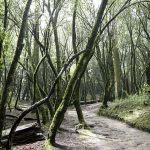
Nearest at 4.69 kms.
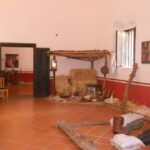
Nearest at 5.20 kms.
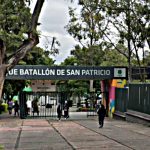
An important park for people from all over Álvaro Obregón . . .
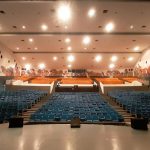
A first-rate performance space for audiences of every age . . .
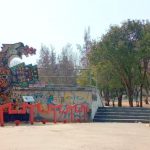
Green areas surrounding the headquarters of the Álvaro Obregón local government . . .

Mexico City's Axolotl Museum in the Parque Tarango . . .
An important natural enclave helps birds moving to and from the southern highlands . . .